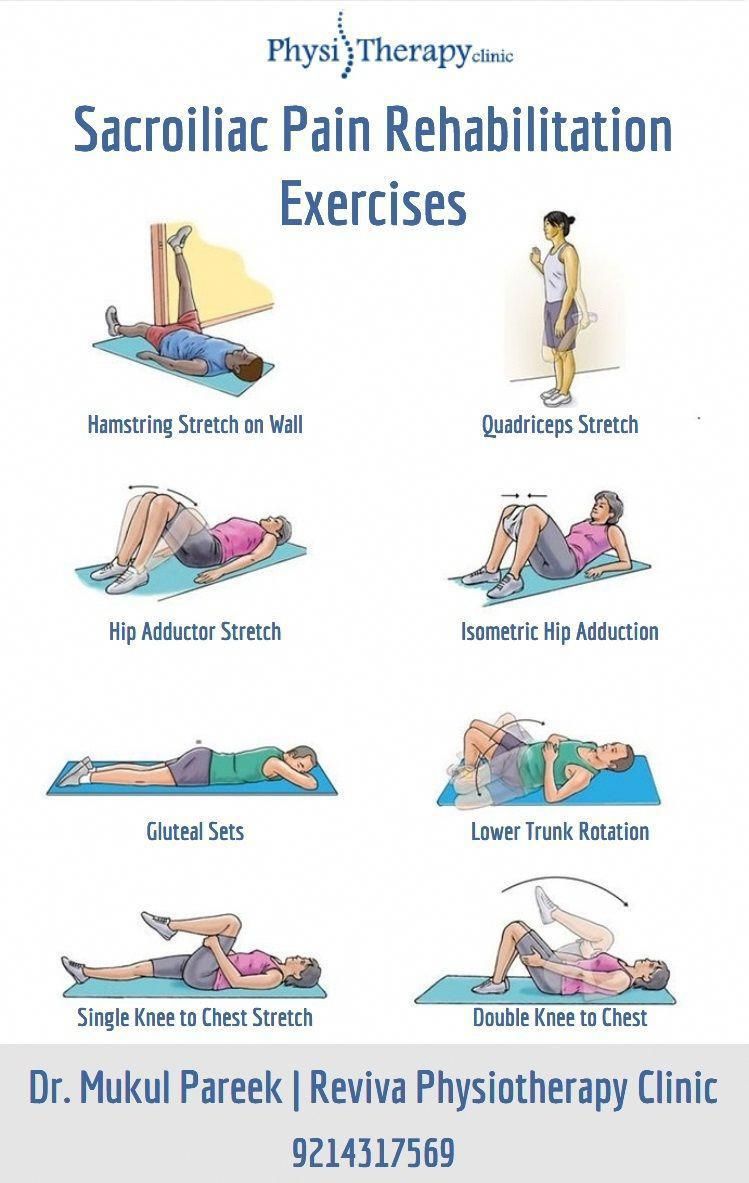The sacroiliac (SI) joint, located where the sacrum and ilium bones meet, is a critical component of the pelvis that absorbs shock and facilitates movement between the spine and the legs. However, when this joint becomes inflamed or irritated, it can lead to sacroiliac joint pain, also known as sacroiliitis. This condition can manifest as a sharp, stabbing pain in the lower back, buttocks, or even radiate down into the legs, significantly impacting daily activities and quality of life.
Fortunately, a well-designed exercise program can play a crucial role in managing sacroiliac joint pain by improving joint mobility, strengthening the surrounding muscles, and enhancing overall pelvic stability. The key is to focus on exercises that minimize stress on the SI joint while promoting flexibility, strength, and proper alignment.
Understanding the Importance of Exercise
Before diving into specific exercises, it’s essential to understand why exercise is beneficial for SI joint pain. The primary goals of an exercise program for sacroiliac joint pain include reducing pain and inflammation, improving joint mobility, strengthening the muscles around the SI joint (such as the gluteals and core muscles), and enhancing proprioception (the body’s ability to sense its position and movement).
Gentle Stretching Exercises
Stretching exercises can help increase flexibility and reduce stiffness around the sacroiliac joint. It’s crucial to perform these exercises gently, especially in the initial stages, to avoid exacerbating the pain.
Knee to Chest Stretch: Lie on your back, bring one knee towards your chest, and hold onto your knee with your hand. Gently pull your knee towards your chest until you feel a stretch in your lower back and buttock. Hold for 30 seconds and then switch sides.
Piriformis Stretch: The piriformis muscle runs from the base of the spine to the thighbone, and tightness in this muscle can irritate the SI joint. To stretch the piriformis, sit on the floor with the affected leg crossed over your other leg. Place your hand on the knee of the crossed leg and pull it toward your opposite shoulder. You should feel a stretch in the back of your leg. Hold for 30 seconds and then switch sides.
Gluteal Stretch: Lie on your back with your affected leg crossed over your other leg. Place your hand on the knee of the crossed leg and gently pull it toward your opposite shoulder until you feel a stretch in your buttock. Hold for 30 seconds and then switch sides.
Strengthening Exercises
Strengthening the muscles around the SI joint, particularly the core and gluteal muscles, can provide additional support and stability to the joint, thereby reducing pain.
Pelvic Tilt: Lie on your back with your knees bent and feet flat on the floor. Tilt your pelvis upwards and then back down again, repeating the motion for 10-15 repetitions. This exercise helps strengthen the abdominal muscles and improves pelvic mobility.
Glute Bridges: Lie on your back with your knees bent and feet flat on the floor. Slowly lift your hips towards the ceiling, squeezing your gluteal muscles as you lift. Hold for a second at the top and then slowly lower back down. Repeat for 10-15 repetitions.
Plank: Start in a push-up position with your hands shoulder-width apart and your body in a straight line from head to heels. Hold this position for as long as you can, up to 60 seconds. This exercise is excellent for strengthening the core muscles, which are crucial for stabilizing the pelvis and SI joint.
Functional Activities
In addition to specific exercises, incorporating activities that promote good posture, balance, and overall physical fitness can also help manage sacroiliac joint pain. Swimming, cycling, and using an elliptical machine are low-impact activities that can help improve cardiovascular fitness without putting excessive strain on the SI joint.
Implementation and Progression
When starting an exercise program for sacroiliac joint pain, it’s essential to begin slowly and gradually increase the intensity and duration of your workouts. Listen to your body and stop if you experience any increase in pain. It may also be beneficial to work with a physical therapist or fitness professional who can tailor a program to your specific needs and abilities.
Conclusion
Exercise can be a powerful tool in the management of sacroiliac joint pain, offering a non-invasive and empowering approach to improving symptoms and enhancing quality of life. By focusing on gentle stretching, strengthening the core and gluteal muscles, and incorporating low-impact activities, individuals can reduce their reliance on pain medications and develop a more proactive approach to managing their condition.
Key Takeaways
- Gentle stretching exercises can help improve flexibility around the sacroiliac joint.
- Strengthening the core and gluteal muscles is crucial for providing support and stability to the SI joint.
- Low-impact activities such as swimming, cycling, and using an elliptical machine can help improve cardiovascular fitness without exacerbating SI joint pain.
- It's essential to start slowly and gradually increase the intensity and duration of workouts to avoid exacerbating the pain.
- Working with a physical therapist or fitness professional can help tailor an exercise program to specific needs and abilities.
What are the primary symptoms of sacroiliac joint pain?
+The primary symptoms of sacroiliac joint pain include sharp, stabbing pain in the lower back, buttocks, or radiating pain down into the legs. The pain can be exacerbated by activities that involve lifting, bending, or twisting, and can significantly impact daily activities and quality of life.
Can exercise alone cure sacroiliac joint pain?
+While exercise can be a highly effective component of managing sacroiliac joint pain, it is often most beneficial when combined with other treatments such as physical therapy, medication, or in some cases, interventional procedures. The goal of exercise is to reduce pain, improve function, and enhance quality of life, rather than to "cure" the condition.
How often should I perform exercises for sacroiliac joint pain?
+It's recommended to perform exercises for sacroiliac joint pain 2-3 times per week, starting with shorter sessions and gradually increasing duration and frequency as your body allows. Consistency is key, but it's also crucial to listen to your body and rest when needed to avoid overexertion.
By adopting a comprehensive approach to managing sacroiliac joint pain, including a well-tailored exercise program, individuals can take the first steps towards alleviating their symptoms and reclaiming their quality of life. Always consult with a healthcare professional before starting any new exercise program, especially if you’re experiencing chronic pain or have underlying health conditions.


